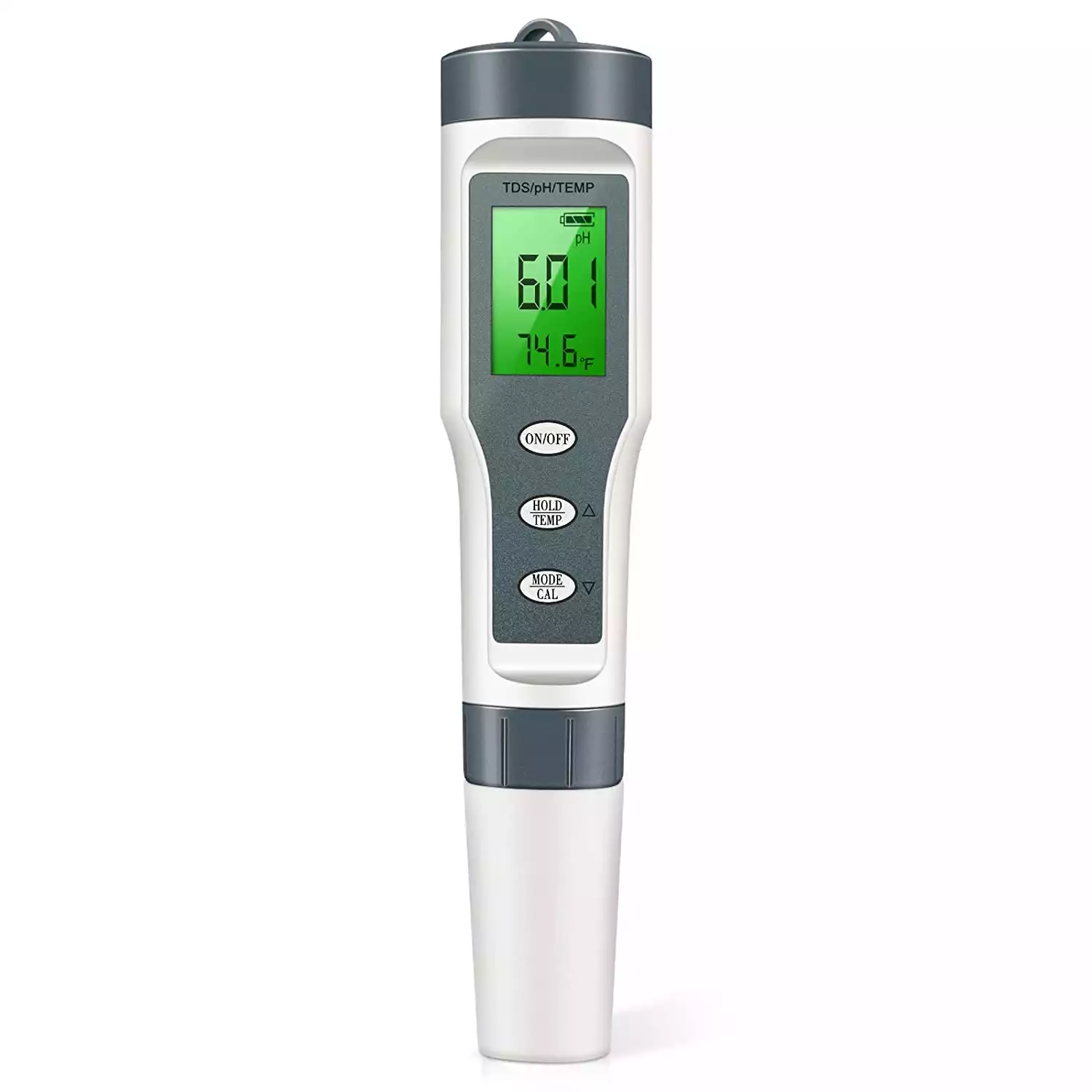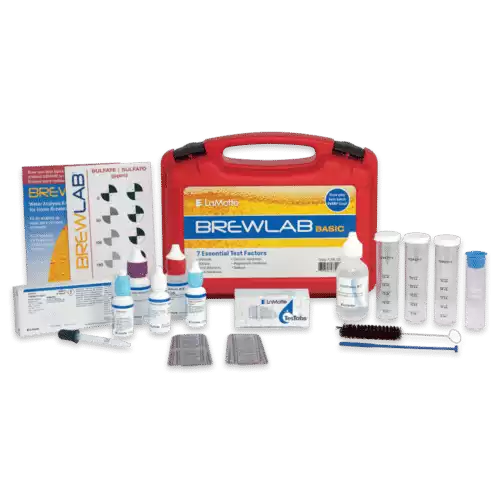Pale Ale is a smooth, easy-drinking beer that is full of flavor and not too heavy. The water profile for brewing a Pale Ale can have an impact on its bitterness, flavor, and mouthfeel. By adjusting the minerals in the starting water, these elements can be better highlighted in the finished product.
The best water profile for a Pale Ale is moderately soft, high in calcium sulfate with restrained calcium chloride to enhance hop bitterness or dryness. Starting water should have a sparge target pH of 5.2-5.6 and a final pH of 4.0-4.2. Tap water, distilled, and reverse osmosis (RO) water can all be adjusted to produce the best flavor.
Read on to learn about the ideal water profile for brewing Pale Ales, and details about how minerals and pH affect the brewing process and final product.
Topics We Cover
What is the ideal water profile for Pale Ales?
The mineral content of water during the brewing process can make a big difference in the look, smell, taste, and mouthfeel of the final product.
For Pale Ales, it’s best to start with moderately soft water that is fairly low in carbonates and high in calcium from gypsum or calcium chloride. Adding more calcium sulfate (gypsum) will produce a drier, crisper-tasting beer.
If your starting water is soft or highly alkaline, the pH should be adjusted by either pre-boiling or diluting it with distilled or reverse osmosis (RO) water.
Should you use a certain city’s water profile for a Pale Ale?
Water-matching to a specific city’s water profile used to be a recommended practice. Water chemistry is complex, but it is important for getting the right flavor and body in a beer.
Using a city’s water profile can be effective if you’re brewing a narrow style of beer. However, some breweries modify their water for brewing. Using a certain city’s water profile may not give you the exact profile that a brewery in that area uses.
Getting your water into a good range for brewing is the best place to start.
What is the ideal pH?
To produce a pale with optimum flavor, the pH needs to be slightly lower than when brewing lagers. Start by testing your water with a brewing water kit or getting a report from your water company.
For Pale Ales, your water should have a mash and sparge target pH around 5.2 to 5.6, then adjust with lactic acid or phosphoric acid and brewing salts as needed to produce a final pH between 4.0 to 4.5.
Using a brewing water calculator can take some of the guesswork out of adjusting the pH in your water profile.
Use this waterproof 3-in-1 pH meter to check the acidity of your brewing water. Automatic temperature control corrects hot water samples during brew day!
What’s the ideal mineral content?
For Pale Ales, the two most important minerals for taste are sulfate and chloride. Sulfate brings out the bitterness of the hops, and chloride will emphasize malt and sweetness. Having the right balance is essential to the taste of your beer.
Generally, the ideal mineral content for Pale Ales is a ratio of sulfate to chloride:
- A 2:1 or 3:1 sulfate to chloride ratio is a good starting point especially if you’re new to brewing Pale Ales.
- Hoppier styles like West Coast IPA work best with a ratio of 4:1.
Ratios aren’t always practical. If the salt levels are too high, it can give your beer off-flavors or make it taste minerally. Keeping sulfates lower than 350 ppm and chloride lower than 200 ppm will give you the best flavors.
Recommended brewing levels for other minerals
Other minerals that make up a water profile include calcium, magnesium, and sodium. Unusually high or low levels of these minerals may also require adjustment for brewing.
Here are the recommended levels for each when brewing:
- Calcium: 50-150 ppm
- Magnesium: 10-40 ppm
- Sodium: 0-150 ppm
By the way, this article is part of a whole series on American Pale Ales. To learn more, check out our articles on the best yeast to use with American Pale Ales, how to brew an American Pale Ale, and the best American Pale Ales to try in 2022!
How do you find your water profile?
To adjust your brewing water, you’ll need to know what you’re starting with. Water chemistry can vary greatly if you’re using well or municipal water supplies for your brewing.
There are three options for getting your water profile:
- Ask your town’s water department for a weekly water quality report.
- Have your water professionally tested by a certified lab.
- Test it yourself with a home testing kit for brewers.
The quickest and most accurate way to test your water is to have it professionally tested by a lab, or test it yourself. You can also ask your water supplier for the most recent water quality report.
If you’re using bottled spring water or distilled/reverse osmosis water, you’ll need to contact the bottler to learn the existing mineral content.
This kit was formulated specifically for testing beer used for brewing beer, includes everything you need, and will last for years!
How important is the water profile in brewing?
Brewing water is an important flavor component in beer brewing.
Water makes up 90-95% of the total ingredients. The pH and mineral content can have a significant impact on the flavor profile of your beer.
To determine if your water is suitable for brewing, you’ll need to consider the impact of the following factors on your water profile:
- pH is critical to the proper enzymatic conversion of the mash. A high pH can lead to harsh off-flavors. A pH that is too low can result in spoilage from acid-producing bacteria.
- Mineral content can impact your flavor profile by highlighting either bitterness or sweetness, but can also produce other off-flavors that can ruin your beer.
How do you adjust your brew water profile?
As you add components such as grains, hops, and yeast to your mash or wort, the pH, acidity, and alkalinity can change. The levels of these components can affect the taste of your finished beer. It’s important to test and adjust the pH of your water at various times during the brewing process.
Adding mineral salts and acids to control pH levels, acidity and alkalinity is the easiest way to adjust your brew water profile. These components are available in powder or liquid form and can be added throughout the brewing process as needed.
When using acids to lower pH, many brewers use lactic or phosphoric acid. It’s important to note that:
- Lactic acid has a strong flavor profile and may not be the best choice to use for Pale Ales.
- Phosphoric acid has a very low flavor profile, so it may be more suitable depending on the amount needed to arrive at the target pH.
- You can also reduce carbonate levels by diluting with distilled water without adding phosphate or lactate.
You may need to experiment with future batches to find the best water profile that works for you.
What is the best water to start with for Pale Ales?
Pale Ales are easier to brew with moderately soft water. Most municipal tap waters are fine if they are pleasant tasting.
Pale Ales are best made with water that is moderately soft with sulfate levels between 200 to 350 ppm, chloride levels of no more than 150 ppm, and carbonates under 50 ppm.
If you’re using distilled or RO water they lack most of the chemicals and minerals beneficial to the brewing water profile for Pale Ales. You’ll need to add minerals to bring your starting water to these levels.
What to add to RO or distilled water to make a Pale Ale
Using RO or distilled water to make a Pale Ale means you’ll be building your water profile from scratch.
RO and distilled water are filtered to remove most of the trace elements and minerals that can be found in tap water. This results in brewing water that is low in minerals and alkalinity. For brewing 5-gallons of Pale Ale, start by adding 4 grams calcium chloride and 7 grams of gypsum or calcium sulfate to the total amount of brewing water needed.
If you’re new to brewing, the consensus amid online forums is to use a calculator like Bru’n Water to use as a starting point when building water profiles from RO and distilled water. It lists the different mineral additions and quantities that are necessary to build your water to the appropriate profile.
What makes a good Pale Ale?
The water profile you use can certainly accentuate the hoppy character of your Pale Ale. However, other characteristics are just as important to the style.
Malt, hops, and yeast are the basis of the Pale Ale style.
Let’s look at how each of these elements contributes to the final style.
Malt
Sometimes English Pale Ale malts, German Pilsner, or Belgian Pale malts are used in place of the US 2-row pale malt, but 2-row is the most commonly used.
The base malt for most American Pale Ales is usually domestic 2-row pale malt. It should make up about 90-95% of the grist. The last 5-10% is often crystal malt in the 30-40 L range. It adds a slight touch of caramel sweetness to balance out the hop-forward style of this beer.
Other malts that are frequently used to enhance the malt profile are Munich and Vienna malts. When used, they should occupy 10 – 20% of the grist with the rest being pale and crystal malts.
Tiny amounts of darker grains can also be added to adjust the color from reddish to copper hues. Very small amounts of chocolate or roasted malts or roasted, unmalted barley can deepen the color without adding any perceptible roasted flavors.
Hops
Hops are the calling card of the Pale Ale. The hops used generally have fairly high bittering levels, but they also get a lot of flavor and aroma from late kettle additions or dry hopping.
Most Pale Ales contain one or more of the “C” hops. These are Cascade, Centennial, Chinook, and Colombus. These provide the fruity, citrusy aroma and flavor for the classic American Pale Ale flavor.
Late addition hops can be broken down into flavor hops (15 minutes left in the boil) and aroma hops (near the end of the boil). When dry hopping, whole hops are easier to use than pellets.
Yeast
The popular Sierra Nevada Pale Ale uses a clean ale yeast called “Chico” to arrive at its signature flavor. This strain of yeast for homebrewers is known as Wyeast 1056 (American Ale), White Labs WLP001 (California Ale), or the dry version, Safale US-56.
Any clean, neutral American yeast strain that attenuates well will produce a good Pale Ale. Aerating the culture and adding a small amount of nutrients when pitching the yeast can enhance the fermentation process.



